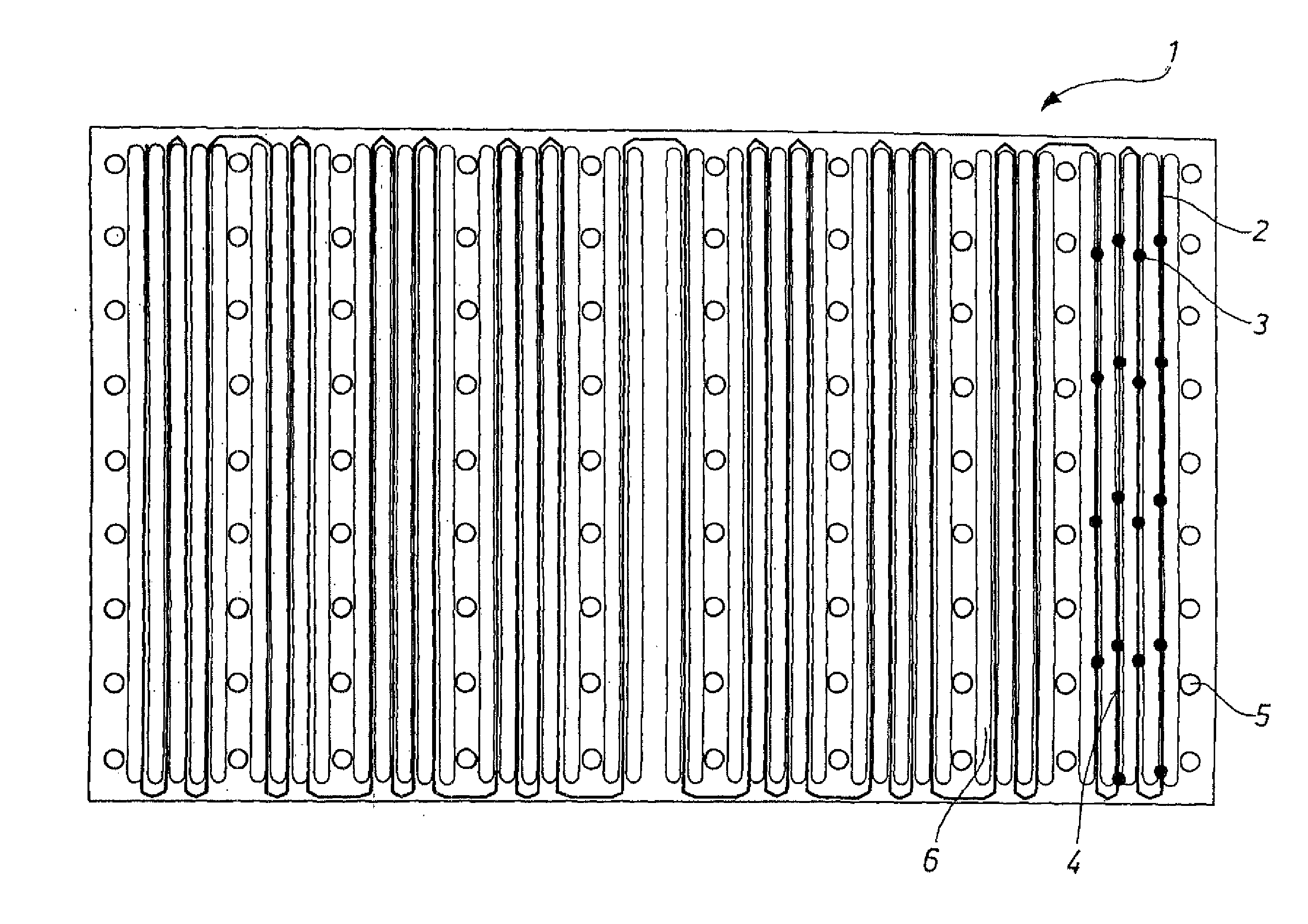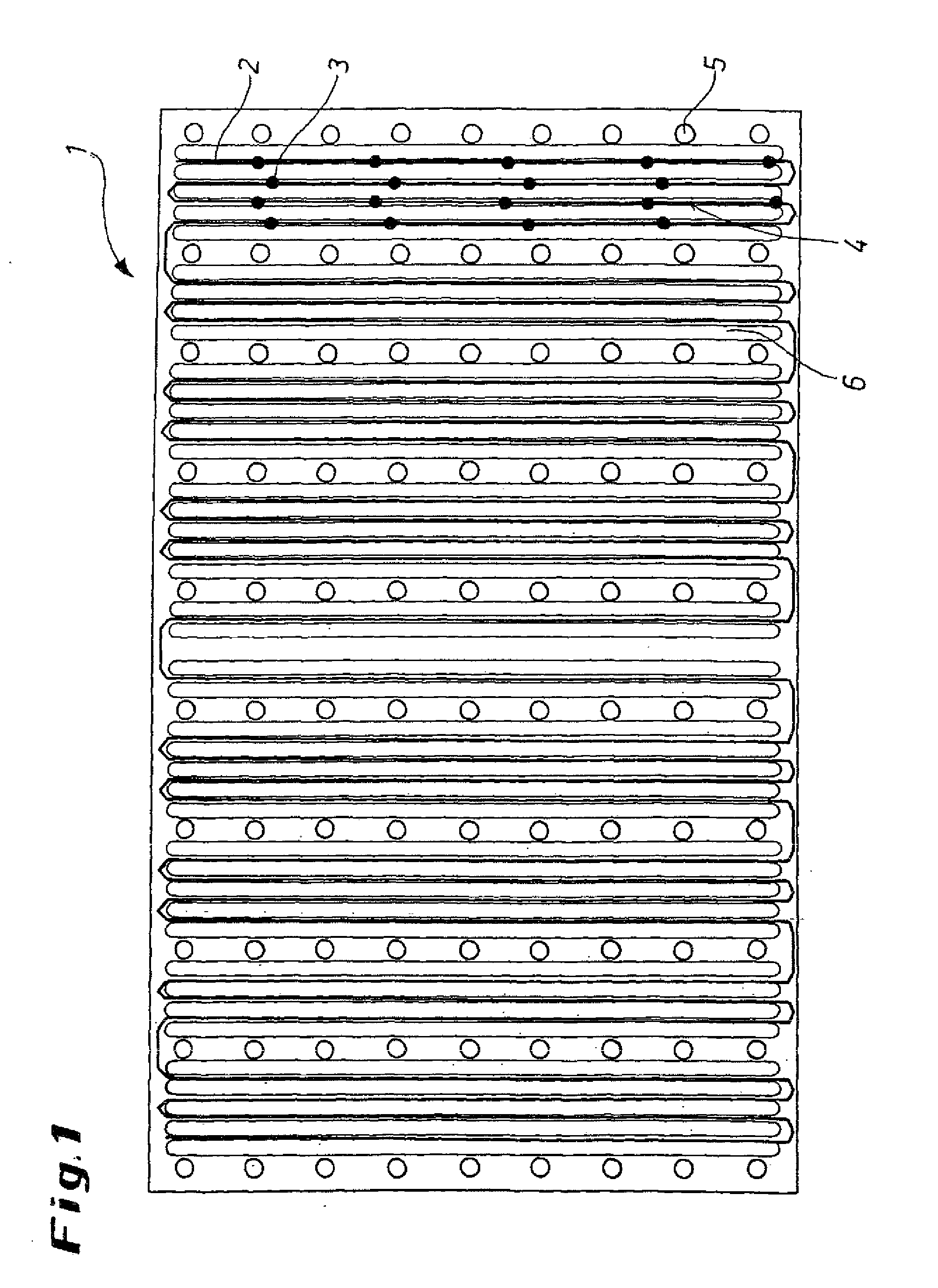Temperature measurement in a chill mold by a fiber optic measurement method
a technology of fiber optic measurement and chill mold, which is applied in the direction of heat measurement, instrumentation, and molds of foundation moulding, can solve the problems of large amount of cabling work, large number and size of thermocouples, and sensors that are also susceptible to electromagnetic fields, so as to improve the local resolution of temperature measurement
- Summary
- Abstract
- Description
- Claims
- Application Information
AI Technical Summary
Benefits of technology
Problems solved by technology
Method used
Image
Examples
Embodiment Construction
[0029]FIG. 1 shows an exemplary embodiment of the invention, in which a light waveguide fiber 2 is laid in meander fashion in grooves 4 between the cooling channels 6 on the rear surface of a copper plate 1 of a mold. In this exemplary embodiment, a light waveguide 2 containing only a few measuring sites 3 has been selected so that diagram can be understood more easily. Many more measuring sites 3 than this, of course, could also be provided. Necked-down bolts 5, in which thermocouples, for example, were or can be arranged, are also visible in this exemplary embodiment. In this exemplary embodiment, it can be seen that the resolution perpendicular to the casting direction is a multiple—perhaps double the resolution—of that obtainable with thermocouples installed exclusively in the necked-down bolts 5. As a result of this advantageous arrangement and use of light waveguide fibers 2, the occurrence of longitudinal cracks in particular can be monitored more effectively. Under certain c...
PUM
| Property | Measurement | Unit |
|---|---|---|
| diameter | aaaaa | aaaaa |
| diameter | aaaaa | aaaaa |
| size | aaaaa | aaaaa |
Abstract
Description
Claims
Application Information
 Login to View More
Login to View More - R&D
- Intellectual Property
- Life Sciences
- Materials
- Tech Scout
- Unparalleled Data Quality
- Higher Quality Content
- 60% Fewer Hallucinations
Browse by: Latest US Patents, China's latest patents, Technical Efficacy Thesaurus, Application Domain, Technology Topic, Popular Technical Reports.
© 2025 PatSnap. All rights reserved.Legal|Privacy policy|Modern Slavery Act Transparency Statement|Sitemap|About US| Contact US: help@patsnap.com



